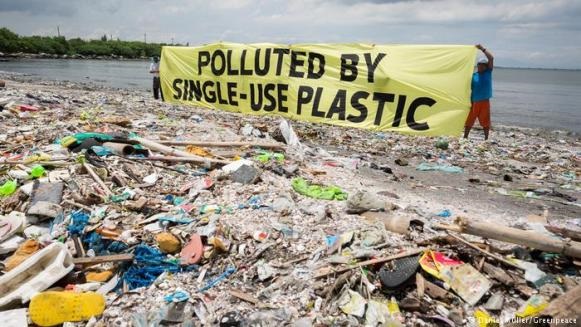Plastic pollution in oceans and other bodies of water has continued to grow sharply and could more than double by 2030, according to an assessment released on Thursday, October 21, 2021 by the UN Environment Programme (UNEP).

The report highlights dire consequences for health, the economy, biodiversity and the climate.
It also says a drastic reduction in unnecessary, avoidable and problematic plastic is crucial to addressing the global pollution crisis overall.
It proposes an accelerated transition from fossil fuels to renewable energies, the removal of subsidies and a shift toward more circular approaches to help reduce plastic waste at the needed scale.
Titled “From Pollution to Solution: A global assessment of marine litter and plastic pollution,” the report shows that there is a growing threat across all ecosystems, from source to sea.
But it also shows that there is the know-how to reverse the mounting crisis, provided the political will is there, and urgent action is taken.
The document is being released 10 days ahead of the start of the crucial UN Climate Conference, COP26, stressing that plastics are a climate problem as well.
Addressing solutions to the problem, the authors highlighted chances of recycling out of the plastic pollution crisis.
They warned against damaging alternatives, such as bio-based or biodegradable plastics, which currently posed a threat similar to conventional plastics.
The report looks at critical market failures, such as the low price of virgin fossil fuel feedstocks (any renewable biological material that can be used directly as a fuel) compared to recycled materials, disjointed efforts in informal and formal plastic waste management, and the lack of consensus on global solutions.
The assessment calls for immediate reduction in plastic production and consumption, and encourages a transformation across the whole value chain.
It also asks for investments in far more robust and effective monitoring systems to identify the sources, scale and fate of plastic, a shift to circular approaches and more alternatives are necessary.
Executive Director of UNEP, Inger Andersen, said: “This assessment provides the strongest scientific argument to date for the urgency to act, and for collective action to protect and restore our oceans, from source to sea.”
She said that a major concern is what happens with breakdown products, such as microplastics and chemical additives, which are known to be toxic and hazardous to human and wildlife health and ecosystems.
“The speed at which ocean plastic pollution is capturing public attention is encouraging. It is vital that we use this momentum to focus on the opportunities for a clean, healthy and resilient ocean,’’ Andersen said.
Currently, plastic accounts for 85 per cent of all marine litter.
By 2040, it will nearly triple, adding 23-37 million metric tons of waste into the ocean per year. This means about 50kg of plastic per meter of coastline.
Because of this, all marine life, from plankton and shellfish; to birds, turtles and mammals; faces the grave risk of toxification, behavioral disorder, starvation and suffocation.
The human body is similarly vulnerable. Plastics are ingested through seafood, drinks and even common salt. They also penetrate the skin and are inhaled when suspended in the air.
In water sources, this type of pollution can cause hormonal changes, developmental disorders, reproductive abnormalities and even cancer.
According to the report, there are also significant consequences for the global economy.
Globally, when accounting for impacts on tourism, fisheries and aquaculture, together with the price of projects such as clean-ups, the costs were estimated to be six to $19 billion per year, during 2018.
By 2040, there could be a $100 billion annual financial risk for businesses if governments require them to cover waste management costs. It can also lead to a rise in illegal domestic and international waste disposal.
The report will inform discussions at the UN Environment Assembly in 2022, where countries will come together to decide the way forward for more global cooperation.
By Cecilia Ologunagba
